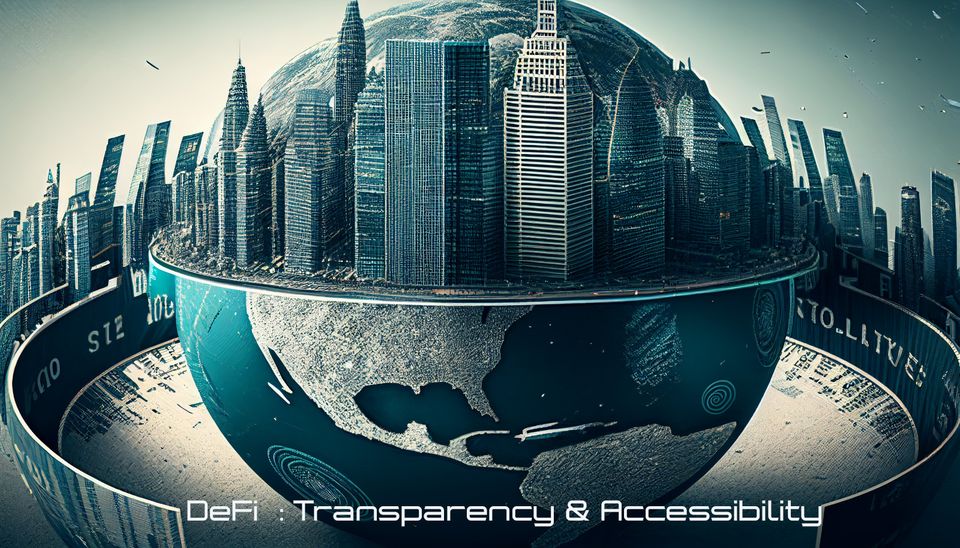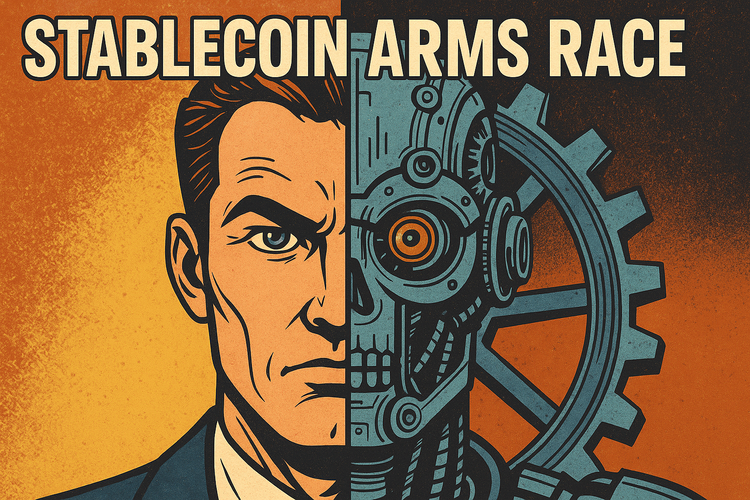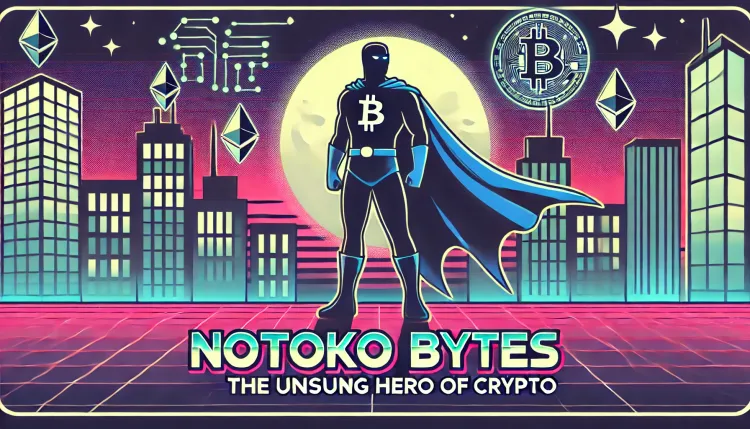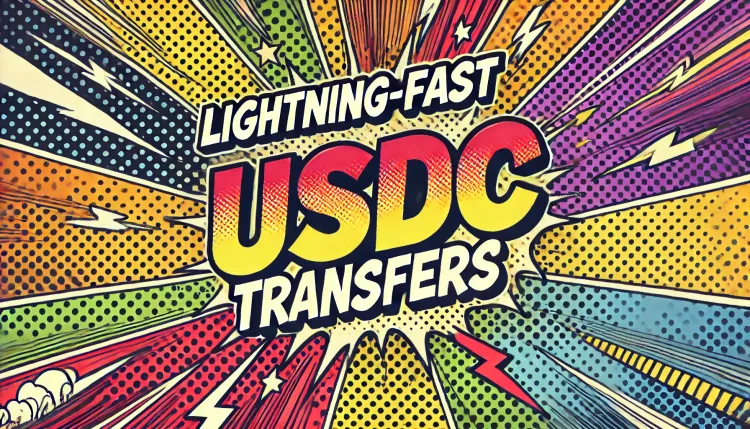The Growing Impact of Decentralized Finance (DeFi) on the Global Financial System

Decentralized finance, or DeFi, has rapidly emerged as one of the most disruptive and transformative forces in the global financial landscape. This innovative sector leverages the power of blockchain technology and smart contracts to create a new, permissionless financial system that operates beyond the traditional boundaries of banks and financial institutions. With a growing number of DeFi platforms and services offering decentralized lending, borrowing, exchanges, and asset tokenization, DeFi is revolutionizing the way people access and engage with financial services worldwide.
The rise of DeFi has been fueled by several factors, including increased transparency, accessibility, and the potential for greater returns compared to traditional finance. As more individuals and institutions recognize the potential of DeFi, the sector continues to expand at an exponential rate, attracting significant attention from investors, regulators, and industry experts alike.
In this article, we will explore the key features and benefits of DeFi and the challenges and risks associated with its widespread adoption. We will also discuss the future outlook for decentralized finance and the trends that are likely to shape its continued evolution. By understanding the transformative potential of DeFi and its impact on the global financial system, readers can gain valuable insights into this rapidly growing and ever-evolving sector.
Overview of DeFi Platforms and Services
The decentralized finance ecosystem is built on diverse platforms and services that leverage blockchain technology to provide innovative financial solutions. In this section, we will explore some of the most popular DeFi services, redefining how users interact with financial products and services.
A. Decentralized Lending and Borrowing
DeFi platforms like Aave, Compound, and MakerDAO have revolutionized lending and borrowing by enabling users to lend and borrow digital assets directly through smart contracts. These platforms eliminate intermediaries, such as banks, allowing for increased efficiency, lower fees, and greater accessibility to financial services.
B. Decentralized Exchanges (DEXs)
Decentralized exchanges, such as Uniswap, SushiSwap, and Curve, facilitate the peer-to-peer trading of cryptocurrencies without the need for a centralized intermediary. DEXs provide users with increased security, privacy, and control over their funds while minimizing the risks associated with centralized exchanges, such as hacking and regulatory constraints.
C. Yield Farming and Liquidity Mining
Yield farming and liquidity mining are innovative DeFi strategies that enable users to earn passive income by providing liquidity to DeFi platforms. Users can stake their digital assets in liquidity pools or participate in lending and borrowing protocols to earn rewards, often in the form of governance tokens or interest.
D. Tokenization of Assets
DeFi platforms like Synthetix and TokenSets enable the tokenization of various assets, including stocks, commodities, and real estate, effectively democratizing access to these traditionally exclusive investment opportunities. Tokenization allows for increased liquidity, fractional ownership, and global accessibility, making it easier for users to invest and trade in a wide range of assets.
These platforms and services represent just a fraction of the rapidly expanding DeFi ecosystem. As the sector continues to grow and evolve, new and innovative financial solutions are likely to emerge, further enhancing the appeal and utility of decentralized finance.
Advantages of DeFi over Traditional Finance
Decentralized finance offers several compelling advantages over traditional finance, which have contributed to its rapid growth and adoption. In this section, we will discuss some of the key benefits that make DeFi an attractive alternative to conventional financial systems.
A. Accessibility and Financial Inclusion
DeFi platforms are accessible to anyone with an internet connection and a digital wallet, regardless of their geographical location or socioeconomic status. This widespread accessibility empowers unbanked and underbanked populations to access financial services, promoting financial inclusion and fostering economic growth in underserved regions.
B. Transparency and Security
Built on blockchain technology, DeFi platforms offer unparalleled transparency, as all transactions and contract interactions are publicly visible and recorded on the blockchain. Additionally, the decentralized nature of these platforms eliminates single points of failure, reducing the risk of hacks and fraud while increasing the overall security of the ecosystem.
C. Programmable Finance and Automation
DeFi platforms harness the power of smart contracts, enabling the creation of programmable financial products and services that automate various processes. This automation reduces human intervention and lowers the likelihood of errors, making the financial system more efficient and cost-effective.
D. Reduced Transaction Costs
By eliminating intermediaries, DeFi platforms can offer reduced transaction fees compared to traditional financial services. This cost-saving benefit allows users to conduct transactions, trade assets, and access financial products at a fraction of the cost typically associated with conventional finance.
The advantages of DeFi over traditional finance are numerous and continue to attract users and investors seeking innovative, transparent, and accessible financial solutions. While challenges remain to be addressed, the potential for DeFi to revolutionize the global financial system is undeniable, and its continued growth and development are likely to further solidify its position as a transformative force within the financial sector.
Challenges and Risks in DeFi Adoption
Despite the many advantages of decentralized finance, there are also challenges and risks associated with its adoption. In this section, we will explore some of the most prominent concerns that may hinder the widespread acceptance of DeFi and impact its growth potential.
A. Security Vulnerabilities and Smart Contract Risks
While blockchain technology offers increased security, DeFi platforms are still susceptible to vulnerabilities and exploits, particularly within smart contracts. Coding errors or unforeseen loopholes can result in significant financial losses for users, undermining trust in the DeFi ecosystem.
B. Regulatory and Compliance Issues
The decentralized nature of DeFi poses challenges for regulators and policymakers, who must strike a balance between fostering innovation and ensuring consumer protection. The lack of clear regulatory frameworks can lead to uncertainties and potential crackdowns, affecting the growth and stability of the DeFi sector.
C. Scalability and Network Congestion
DeFi platforms are often built on top of existing blockchain networks, such as Ethereum, which can suffer from scalability issues and network congestion. This can result in slow transaction times and increased fees, hampering the user experience and limiting the effectiveness of DeFi solutions.
D. User Experience and Complexity
Many DeFi platforms and services require a certain level of technical expertise, making them less accessible to non-technical users. To drive mass adoption, the DeFi ecosystem must prioritize user-friendly interfaces and simplify complex processes, ensuring that users of all skill levels can access and benefit from decentralized finance.
The Future of DeFi: Trends and Predictions
As decentralized finance continues to mature and expand, several trends and developments are likely to shape the future of this innovative sector. In this section, we will explore some key trends and predictions that may influence the growth and evolution of DeFi in the coming years.
A. Cross-Chain Interoperability
Interoperability between different blockchain networks will become increasingly important as the DeFi ecosystem grows. Cross-chain solutions like Cosmos and Polkadot will enable seamless communication and interaction between various DeFi platforms, enhancing efficiency and fostering innovation across the sector.
B. Layer 2 Scaling Solutions
To address scalability challenges, DeFi platforms are likely to adopt Layer 2 scaling solutions, such as Optimistic Rollups and zk-Rollups, which offer increased transaction throughput and reduced fees. These solutions will improve user experience and facilitate the growth of the DeFi ecosystem.
C. Integration with Traditional Finance
DeFi platforms will increasingly collaborate with traditional financial institutions, bridging the gap between the two systems and driving greater adoption of decentralized finance. This integration will enable users to access a wider range of financial services while maintaining the benefits of DeFi, such as increased transparency and reduced fees.
D. Improved Privacy Solutions
Privacy will become essential to DeFi as users and regulators demand greater control over personal financial data. Solutions such as zero-knowledge proofs and confidential transactions will be integrated into DeFi platforms, providing enhanced privacy and security for users.
How to Get Started with DeFi: A Beginner's Guide
For those interested in exploring the world of decentralized finance, getting started with DeFi can be a daunting task. This section will provide a step-by-step guide for beginners, outlining the essential steps to take when diving into the DeFi ecosystem.
A. Acquire a Digital Wallet
The first step in entering the DeFi space is to set up a digital wallet, such as MetaMask, Trust Wallet, or Ledger. These wallets allow you to store and manage your cryptocurrencies and interact with DeFi platforms and services.
B. Buy Cryptocurrencies
Next, you'll need to purchase cryptocurrencies to use on DeFi platforms. Popular options include Ether (ETH), Bitcoin (BTC), and stablecoins like USDC or DAI. You can buy cryptocurrencies on centralized exchanges, such as Coinbase or Binance, or through decentralized exchanges like Uniswap or SushiSwap.
C. Research DeFi Platforms and Services
Before you start using DeFi platforms, it's crucial to research and understand the various services and protocols available. This includes decentralized lending and borrowing platforms, decentralized exchanges, and yield farming opportunities. Familiarize yourself with the risks associated with each service and consider seeking advice from experienced DeFi users or online communities.
D. Experiment with Small Amounts
When starting, it's wise to experiment with small amounts of capital to minimize potential losses. This will allow you to gain experience and confidence before committing larger sums to DeFi platforms and services.
E. Stay Informed and Educated
The DeFi landscape is constantly evolving, with new platforms, services, and trends emerging regularly. Stay informed by following reputable news sources, participating in online forums, and engaging with the DeFi community to keep up-to-date with the latest developments and best practices.
DeFi Success Stories: Real-World Use Cases
As DeFi continues to gain traction, numerous success stories highlight the transformative impact of decentralized finance on individuals and businesses worldwide. In this section, we will explore some inspiring real-world use cases that demonstrate the potential of DeFi to revolutionize the financial landscape.
A. Financial Inclusion in Developing Countries
DeFi has enabled unbanked and underbanked populations in developing countries to access financial services, fostering economic growth and financial inclusion. In countries like Nigeria and Venezuela, where traditional banking infrastructure is lacking or unreliable, DeFi platforms provide a viable alternative for individuals to access savings, loans, and other financial products.
B. Peer-to-Peer Lending and Borrowing
DeFi platforms like Aave and Compound have disrupted the traditional lending and borrowing market by offering peer-to-peer financial services without the need for intermediaries. These platforms have enabled users to lend or borrow funds with lower fees and more flexible terms, benefiting both borrowers and lenders.
C. Decentralized Exchanges (DEXes)
Decentralized exchanges, such as Uniswap and SushiSwap, have experienced explosive growth as users seek to trade cryptocurrencies without the need for a centralized authority. DEXes offer enhanced security, privacy, and control over one's assets, making them an attractive option for trading cryptocurrencies.
D. Yield Farming and Liquidity Provision
Yield farming has emerged as a popular DeFi strategy, allowing users to earn passive income by providing liquidity to platforms like Curve or Balancer. This innovative approach has unlocked new financial opportunities for individuals, enabling them to earn interest on their idle assets.
DeFi Security and Risk Management: Best Practices
While decentralized finance offers numerous benefits, it also comes with inherent risks. Security and risk management are crucial aspects to consider when engaging in DeFi activities. This section will outline best practices to help users safeguard their assets and minimize potential risks within the DeFi ecosystem.
A. Research DeFi Projects Thoroughly
Before investing in any DeFi project, conduct thorough research to ensure its legitimacy and credibility. This includes evaluating the project's team, code audits, community support, and historical performance. Be cautious of projects that promise unrealistic returns or lack transparency.
B. Use Reputable Wallets and Platforms
Choose well-established and reputable digital wallets and DeFi platforms to store and manage your assets. Secure wallets like MetaMask, Ledger, and Trezor are widely trusted within the DeFi community.
C. Implement Strong Security Measures
Take appropriate security measures to protect your digital wallet and DeFi accounts. This includes using strong, unique passwords, enabling two-factor authentication (2FA), and keeping your private keys and seed phrases secure and backed up.
D. Diversify Your Investments
Diversification is an essential risk management strategy in DeFi. Spread your investments across various platforms, projects, and asset types to mitigate the impact of potential losses and reduce your overall risk exposure.
E. Stay Informed and Educated
Keep yourself informed about the latest DeFi security risks, trends, and best practices. Participate in online communities, follow reputable news sources, and engage with industry experts to stay up-to-date with the evolving DeFi landscape.
The Future of DeFi: Trends and Developments to Watch
The world of decentralized finance is rapidly evolving, with new platforms, services, and trends constantly emerging. In this section, we will explore the future of DeFi, highlighting key trends and developments that are poised to shape the industry and drive further growth in the coming years.
A. Layer 2 Scaling Solutions
As DeFi continues to grow, scalability becomes increasingly important. Layer 2 scaling solutions, such as Optimism, zkSync, and Arbitrum, aim to improve transaction throughput and reduce network congestion, making DeFi platforms more efficient and user-friendly.
B. Interoperability and Cross-Chain Integration
Interoperability between different blockchain networks is a crucial development for the future of DeFi. Projects like Polkadot, Cosmos, and Chainlink are working on cross-chain integration, allowing users to seamlessly move assets and interact with multiple blockchain ecosystems.
C. Regulatory Developments
As DeFi gains mainstream adoption, regulatory scrutiny is likely to increase. The industry will need to adapt and respond to new regulations while maintaining its core principles of decentralization, transparency, and inclusivity.
D. Institutional Adoption
Institutional investors and traditional financial institutions are beginning to explore the potential of DeFi. Increased institutional adoption will bring new capital and credibility to the DeFi ecosystem, driving further growth and innovation.
E. Decentralized Identity and Privacy
Privacy and digital identity are becoming increasingly important within the DeFi landscape. Projects like SelfKey, Civic, and uPort are developing decentralized identity solutions that enable users to securely manage their digital identities while interacting with DeFi platforms.
Conclusion: The DeFi Revolution Continues
In conclusion, decentralized finance has already made significant strides in reshaping the financial landscape, and its potential for further growth and innovation is undeniable. As we've explored in this article, DeFi offers a range of benefits, from increased accessibility and transparency to reduced costs and greater control over one's assets. By understanding the fundamentals of DeFi, staying informed about emerging trends and developments, and implementing robust security and risk management practices, users can make the most of the opportunities presented by this financial revolution.
The future of DeFi holds immense promise, with new platforms, services, and technologies continuing to emerge. As the industry matures and gains mainstream adoption, we can expect even greater breakthroughs that will empower individuals and businesses worldwide to access and engage with financial services in new and transformative ways. Stay informed, stay secure, and join the DeFi revolution today.
Please share your thoughts on the article by clicking below Emoji ...
Disclosure
*The information provided on this cryptocurrency blog is for educational and informational purposes only and should not be construed as financial, investment, or trading advice. The authors, contributors, and administrators of this blog are not licensed financial professionals and do not hold any formal qualifications in the fields of finance, economics, or cryptocurrencies.
The content on this blog is based on the authors' personal opinions, experiences, and research, and should not be considered as professional financial guidance. While we strive to provide accurate, up-to-date, and reliable information, we cannot guarantee the accuracy or completeness of the information presented. Cryptocurrency markets are highly volatile, and investments in cryptocurrencies and related assets carry a substantial risk of loss.
Before making any financial decisions or investments, you should consult with a qualified financial advisor or perform your own research and analysis. Any actions taken based on the information provided on this blog are at your own risk, and the authors, contributors, and administrators of this blog cannot be held liable for any losses or damages resulting from the use of the information found herein.
By using this blog, you acknowledge that you have read and understood this disclosure and agree to assume full responsibility for any decisions or actions you take based on the information provided.*








